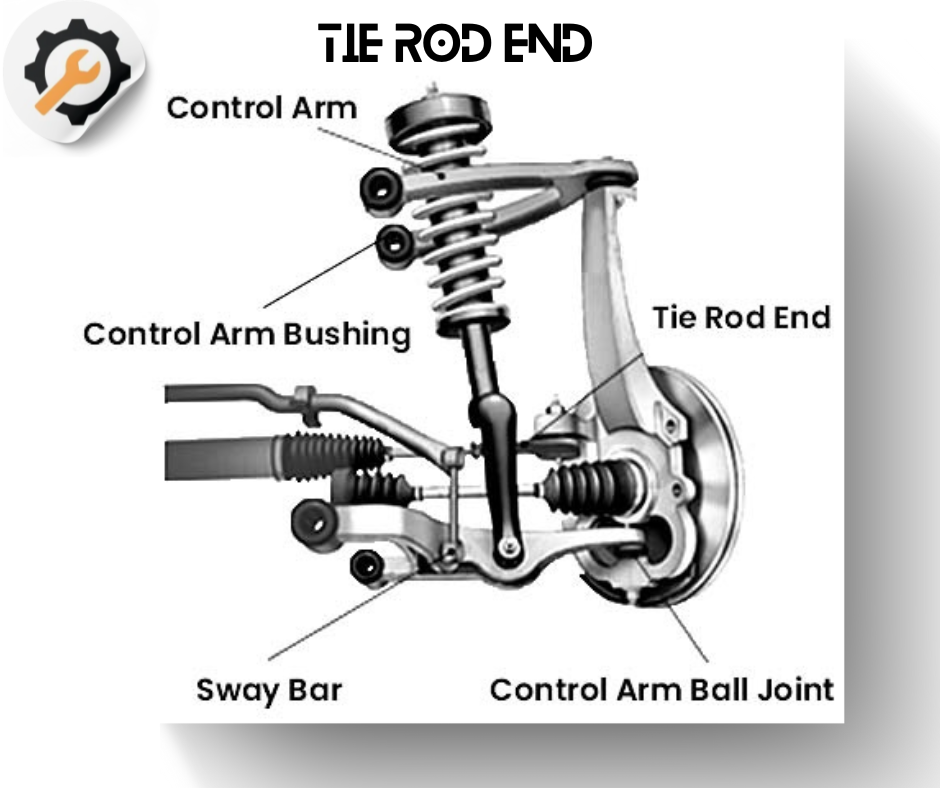How Loose Tie Rod Ends Can Affect Your Steering – Loose or worn tie rod ends lead to poor steering control

Imagine driving down the highway, and your car feels like it’s wandering, pulling, or not responding well to your steering inputs. That unsettling feeling can often be traced back to one thing—loose or worn tie rod ends.
Tie rod ends are crucial components in your vehicle's steering system, connecting the steering rack to the steering knuckle. They ensure that when you turn the wheel, the tires respond accordingly. If they’re loose or worn out, your ability to steer with precision is compromised, putting your safety—and your car—at risk.
Let’s dive into how loose tie rod ends can affect your steering, the warning signs to watch for, and how to replace them before they cause bigger problems.
What Do Tie Rod Ends Do?
Tie rod ends may not be large, but they play a massive role in your car’s steering system. They allow your car’s wheels to pivot as you turn the steering wheel, making smooth and responsive steering possible. These components are designed to move with your suspension, providing flexibility while maintaining a solid connection between your steering wheel and the wheels.
When tie rod ends become loose, worn, or damaged, this connection weakens, causing steering issues that can affect your driving safety.
How Loose Tie Rod Ends Affect Steering
When tie rod ends wear out, your steering becomes less responsive and can feel “sloppy” or “loose.” Here’s how it impacts your driving experience:
-
Poor Steering Control: Loose tie rod ends make it harder to steer accurately, especially at higher speeds. You may notice the car drifting or not holding a straight line.
-
Uneven Tire Wear: Worn tie rod ends cause your tires to misalign, leading to uneven tread wear. This not only shortens the life of your tires but also reduces grip on the road, increasing the chances of an accident.
-
Steering Wheel Vibration: If you feel vibration or shaking in your steering wheel, especially while turning, it could be a sign that the tie rod ends are failing.
-
Knocking Sounds: As tie rod ends wear, they can loosen, causing knocking or clunking noises when turning or driving over bumps.
Warning Signs of Worn or Loose Tie Rod Ends
Spotting the signs of loose tie rod ends early can prevent major steering and suspension issues. Look out for these warning signs:
-
Steering Play: If you notice excessive play in your steering wheel or the car doesn’t respond as quickly when turning, your tie rod ends could be the culprit.
-
Pulling to One Side: A vehicle pulling to one side or uneven steering may indicate loose or damaged tie rod ends, throwing your alignment off.
-
Unusual Noises: Listen for clunking or knocking sounds, especially when making sharp turns or driving over rough surfaces.
-
Visible Wear: If you inspect your tie rod ends and see cracks, corrosion, or any movement in the joints, they need to be replaced immediately.
Why You Should Replace Worn Tie Rod Ends
Neglecting to replace loose or worn tie rod ends can lead to serious problems:
-
Loss of Control: The more worn out your tie rod ends become, the more difficult it will be to control your vehicle, especially in emergencies or at high speeds.
-
Tire Damage: Ignoring worn tie rod ends can ruin your tires due to misalignment, leading to uneven wear and reduced performance.
-
Costly Repairs: The longer you wait, the more likely you’ll damage other parts of the steering and suspension system, leading to expensive repairs.
How to Replace Tie Rod Ends
Replacing tie rod ends isn’t overly complicated, but it requires precision. Here’s a general step-by-step outline:
-
Raise the Vehicle: Use a jack to lift the front of your car and secure it with jack stands.
-
Remove the Old Tie Rod Ends: Loosen the lock nut on the inner tie rod and remove the cotter pin holding the outer tie rod. Use a wrench or tie rod end puller to separate the tie rod from the steering knuckle.
-
Install New Tie Rod Ends: Attach the new tie rod ends to the steering knuckle, securing them with a new cotter pin, and tighten the lock nut.
-
Alignment: After replacing tie rod ends, it’s essential to get a wheel alignment to ensure your steering operates correctly and to prevent uneven tire wear.
Keep Your Steering in Check with Sparesworld
At Sparesworld, we offer high-quality replacement tie rod ends and expert advice to ensure your car steers safely and smoothly. If you’re experiencing steering issues or noticing any of the warning signs, don’t wait—inspect your tie rod ends and replace them as needed. And if you need help, our team is here to assist you with both parts and expert consultancy.
Stay safe, steer with precision, and keep your car in top shape!

 Loading..
Loading..